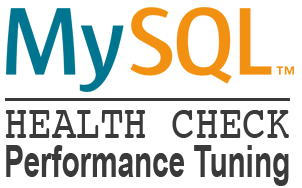MySQL Health Check and Performance Tuning
Your MySQL server doesn’t take a day off.

If your data performs, your company performs. Don’t let your database fall behind without a MySQL Health Check.
Peace of mind is worth a quick MySQL Health Check.
When you are running a fully-loaded MySQL server, any problem is today’s problem, whether you know it or not—some go hidden for days or weeks at a time. Without your company’s database, the business won’t operate at a modern, fully-functional level. Reveal errors. Reveal weaknesses. Make your MySQL database fit and fast again with a health check by XTIVIA.
XTIVIA’s MySQL database Health Check gauges your system’s performance, stability, and data efficiency. Depending on your need, we can focus such a health check on performance, security, migration, upgrades, or availability.
Our MySQL Health Check rates a database on the following:
- Are the database and operating system properly tuned?
- Are there hardware resources for the various applications?
- Have schemas been normalized or denormalized where appropriate?
- Have proper indexes been created?
- Are critical administrative utilities run regularly?
- Does the staff have the skills needed to maintain an efficient system?
XTIVIA doesn’t approach Health Checks with a cookie-cutter mentality. We only perform checks after evaluating your server’s operational environment and determining what would be most effective for you.
Review your business performance from an end-to-end perspective.
Delivering a successful assessment of your database performance by
uncovering the root cause of any database performance issues is our goal.
Hardware Resources:
A well-designed system will allow for ample distribution of workload across spindles, controllers, and CPUs. The I/O subsystem may be direct-attached storage (DAS), network-attached storage (NAS) or storage area networks (SAN) and within each storage type, there are various flavors available of RAID, iSCSI, SATA, SAS, SSD, etc. Depending on what is being used on-site, this will be analyzed for its effect on the database and applications. I/O configuration is the most flexible of the resources. Database and System Administrators can work jointly to balance the I/O load across all available resources. The objective is to eliminate bottlenecks and sustain throughput for the life of the database server.
A large server may contain several gigabytes of main memory. The use of that memory has to be carefully divided among the functions of the server – applications, database, and operating system. The goal is to allocate sufficient free memory to meet the peak demands of the workload, optimally tune Unix kernel memory-specific parameters where applicable, and dedicate a tunable chunk to the MySQL database and its many memory structures.
Operating System:
MySQL Database Server:
Client Communications:
Application Implementation:
Database applications can often be enhanced using techniques introduced after the application was originally designed. A discussion with the application developers will aid the DBA in making recommendations for improving the application.
While the goal of the above analysis is to leverage hardware and software to its fullest potential, this area of the assessment strives to provide operational stability to the environment. Looking at batch jobs, backup and recovery strategies, logging strategies, upgrade strategies, and test platform capability will enable the DBA to provide recommendations for improving uptime of the environment. During the Performance Analysis, clients will provide access to pertinent systems and key personnel to ensure a thorough and productive assessment. Key individuals within the environment are the DBA, the System Administrator, the Application Team Leader, and others identified as subject matter experts.

